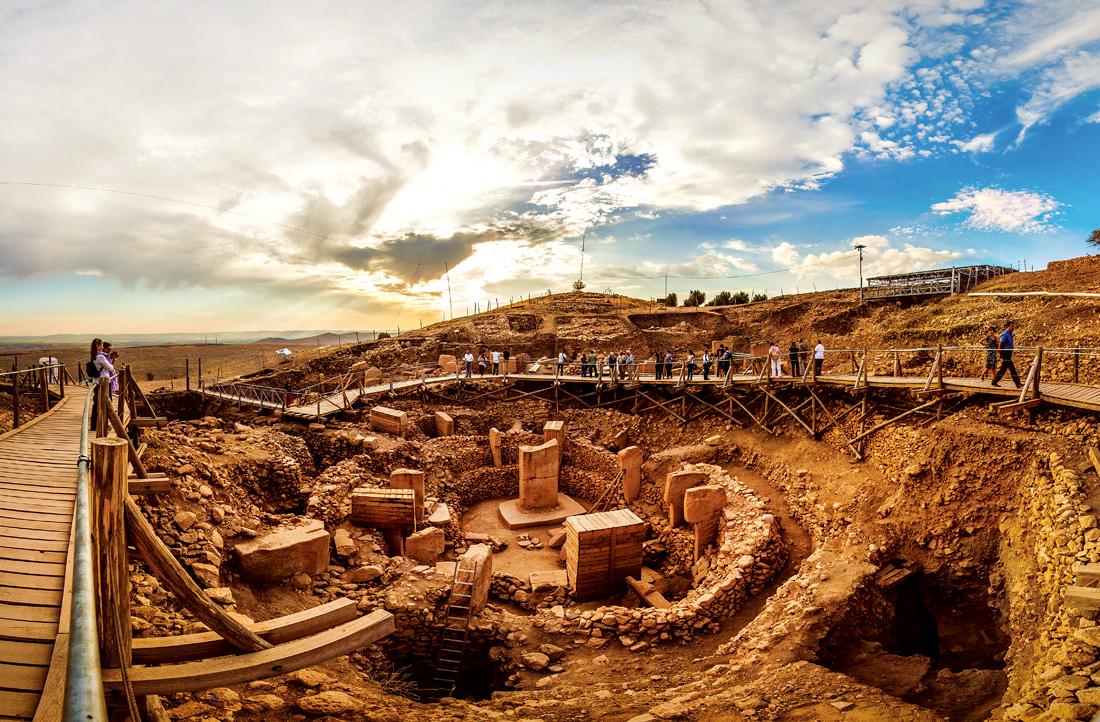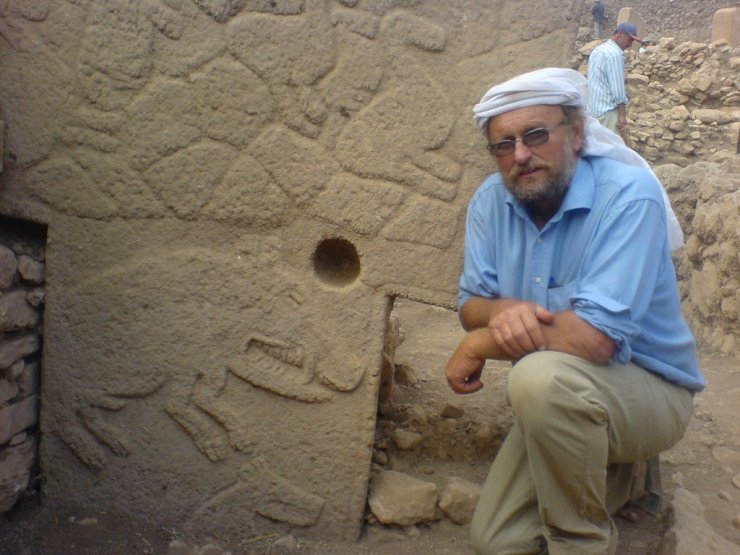This article is prepared for ENGL 111.03 class again. However, I changed some minor details. Enjoy reading!


The transition between the Paleolithic and the Neolithic Age is one of the essential transformations in the history of the world that modified human beings’ lifestyle such as the invention of agriculture or the emergence of social stratification. From the beginning of 20th century, a number of disputes occurred regarding the causes and the outcomes of this transition process. In the 1920s, Gordon Childe claimed that harsh geographical conditions with enormous climate changes led foragers to settle suitable places. For a long time, his thoughts were widely accepted as a true explanation in the world. However, like many theories, his theories could be objected with new studies. In the 1990s, after conducting excavations in Göbekli Tepe, Turkey, Archeologist Klaus Schmidt emphasized that humans played an active role in the transformation to Neolithic Age1. The excavations that took place in Göbekli Tepe demonstrate that Childe’s theory regarding the formation of the Neolithic Age becomes questionable. In particular, people’s activeness at the beginning of Neolithic, the division of labor, the existence of classes and the existence of spiritual ideas in preparing the initial agriculture activities make Childe’s theory refutable.
I-People’s Activeness on the verge of the Neolithic Era- To be active or inactive? That’s the question!
Contrary to Childe’s insignificance of humans about carrying out the transformation from the Paleolithic Age to Neolithic Era, Göbekli Tepe demonstrates that people played an active role during this time. Childe claimed that
“man had made no fundamental change in his attitude to the external world.”2
In his opinion, people could not alter any prominent thing in the world. They were like the puppet of nature that always determines and shapes history. To exemplify, no matter what those people did, they could not increase their supplies in any case3. Besides, they were not ready to face dreadful events like droughts or floods; therefore, their
“labors and plans might be frustrated.”4
So, people had to leave their nomad lifestyle and the transition towards the Neolithic Era initiated. On the other side, Göbekli Tepe’speople were foragers when they built their temple. Constructing a temple with its big pillars displays that humankind even forager people could affect nature for their goals. This is because they may have found their raw materials from nature and some natural resources could have diminished in this construction. Moreover, natural disasters did not hinder people to build a temple and to worship in it after the construction5. Besides, Göbekli Tepe people voluntarily abandoned the temple not the after a natural change or population boom6. In short, nature could not affect their decisions. Interestingly, even Childe accepted humankind’s effects in remarking
“the enlarged real control over nature possessed by barbarian societies.”7
Additionally, J. M. Roberts, a writer of world history, remarked that
“man-made culture and tradition are increasingly the determinants of change.”8
According to him, alterations in history was determined by human mind9. What is more, Prof. Clive Ponting, an author of history books, pointed out that human genius with their knowledge enabled progress to transform from the Paleolithic Era to the Neolithic Age. To exemplify, the earlier settlements of Mesoamerica (not Mesopotamia) demonstrates that the Paleolithic groups altered nature10like Göbekli Tepe’s people. Briefly, this transformation was mostly accomplished thanks to humankind’s activeness.
II-The Division of Labor in Göbekli Tepe
The second thing that Childe’s views debatable is that the likelihood of the division of labor at Göbekli Tepe’shunter-gatherer society. Childe indicated that the specialization of labor did not exist through this transformation11. In his view, after inventing agriculture, people’s surplus in production rose and people shared their duties to accomplish to increase in production. The more production in agriculture, the more gain income from it. Thus, those who got more income from agriculture began to dominate other people and this made some people more powerful while other’s situation got worse. He remarked that
“undoubtedly. . . Neolithic life found outward expression in social and political institutions.”12
On the other side, Klaus Schmidt found large blocks of limestone that weigh tones at Göbekli Tepe and suggested that moving
“these raw materials to their desired destinations. . . ”13
requires advanced technical information as well as developed methods concerning how to put tons of stones in an area. Not only the weight of stones, but the depicted figures on these blocks necessitate sufficient expertise14.To complete their depictions, artists could have shared their duties. That is, people would have divided their tasks among themselves in terms of putting stones in proper places or drawing figures on pillars. So, Göbekli Tepe’s forager people were
“far beyond the “simple” social organization we usually expect in a hunter-gatherer society.”15
Thus, the division of labor can exist in this transition.
III-Social Stratification in Göbekli Tepe

The third thing that makes Child’s views debatable is that the possibility of the existence of social stratification at Göbekli Tepe. When Schmidt searched remnants at Göbekli Tepe, he found ornamental products such as beads and buttons. However, he could not easily find similar products outside. In his opinion,
“the rarity of these objects points to the possibility that those who produced and used these items formed a small elite, perhaps a separate class…”16
This is because those products have been discovered in developed settlements of Anatolia17. Even though Göbekli Tepe is not a settlement, the common similarity between Göbekli Tepe and other settlements is all they have big buildings whose owners would be the elite class and smaller constructions that lower class would have built increase the likelihood of social stratification.19Except Göbekli Tepe, some historians accepted social stratification before the Neolithic Age. To illustrate, J. M. Roberts claims that this
“between the sexes, whereby men went out to hunt and gather food while women stayed at the home base, was probably well-established before communities became more settled.”20
Though this opinion is different from Schmidt’s view, it also makes Childe’s allegation refutable.
IV-The Existence of Spiritual and Supernatural Ideas before the Neolithic Age
The fourth thing that makes Childe’s way of thinking questionable is that there are supernatural and abstract depictions that can show the existence of spiritual ideas at Göbekli Tepe. In Childe’s view, powerful people invented religion as a way of encouraging weak people. If they do not obey strong people’s wants, religion becomes a mean of sanction. By doing so,
“magico-religious sanctions, by more or less coherent system of beliefs and superstitions . . .”21
supported these people in time. Religious expressions in life were
“really unlikely that any such existed”22
before these advancements. On the other hand, Schmidt discovered many animal reliefs on the T-shaped pillars. Apart from animals, he found abstract symbols that are like the letter of H and anthropomorphic shapes; however, they do not have any depiction of faces. In this regard, Schmidt proposed that
“they seem to be impersonal supernatural beings, from the otherworld, beings who gathered at Göbekli Tepe for as yet unknown reason.”23
Even though the symbolism is unknown, these reliefs on the T-shaped pillars manifest a sort of another world. Additionally, he continued that
“the construction of a massive temple by a group of foragers is evidence that organized religion could have come before the rise of agriculture and other aspects of civilization.”24
Thus, not only religious ideas may commence before the Neolithic, besides, these ideas could have formed a system to manage people such as building a temple to worship.
Conclusion
On the whole, Gordon Childe’s assumptions concerning the rise of Neolithic Age may become arguably with the excavation of Göbekli Tepe. First of all, the influences of human beings on the rise of the Neolithic Age were undeniable. Hence, this factor weakens Childe’s interpretation of the unimportance of people’s roles in the Neolithic Era. Besides, Childe’s viewpoints about the division of labor, the rise of classes and religious ideas are contestable since Göbekli Tepe shows that these properties existed before the Neolithic. Thus, his ideas may be re-examined in grasping the alteration from the Paleolithic to the Neolithic Age.
Notes
- Klaus Schmidt, “Anatolia”, A Companion to the Archaeology of the Ancient Near East, (Blackwell Publishing, 2012), 156-157.
- Gordon Childe, “The Neolithic Revolution”, Man Makes Himself. (London: Watts & Co. Publications, 1936), 74.
- Childe, Man Makes Himself,
- Gordon Childe, “Neolithic Barbarism”, What Happened in History. (Harmondsworth: Penguin Books, 1960), 68.
- Elif Batuman, “The Sanctuary: The World’s Oldest Temple and The Dawn of Civilization”, The New Yorker, December 2011, 8.
- Batuman, “The Sanctuary”, 14.
- Childe, What Happened in History, 69.
- M. Roberts, “The Quickening Pace of Change”, The Penguin History of the World,(Harmondsworth: Penguin Books, 1997), 37.
- Roberts, “Man the Change Maker”, The Penguin History, 38.
- Clive Ponting, “Crops and Animals”, World History: A New Perspective, (London: Pimlico Publications, 2001), 51-52.
- Childe, Man Makes Himself,
- Childe, Man Makes Himself,
- Schmidt, “Anatolia”, 159.
- Ibid, 156.
- Ibid, 156.
- Ibid, 157.
- Ibid, 157.
- Ibid, 157.
- Ibid, 152.
- M. Roberts, “The Coming of Agriculture”, A Short History of the World, (Oxford: Oxford University Press, 1997), 34.
- Childe, Man Makes Himself, 112.
- Childe, Man Makes Himself, 115.
- Ibid, 153.
- Charles C. Mann, “The Birth of Religion”, National Geographic Magazine, (2011): 57.
Sources
Batuman, Elif. “The Sanctuary: The World’s Oldest Temple and The Dawn of Civilization”, The New Yorker. (2011): 1-17.
Link: https://www.newyorker.com/magazine/2011/12/19/the-sanctuary
Childe, Gordon V. Man Makes Himself. London: Watts & Co. Publications, 1936.
Childe, Gordon V. What Happened in History?.Harmondsworth: Penguin Books, 1960.
Mann, Charles C. “The Birth of Religion”, National Geographic Magazine. (2011): 34-59.
Link: https://www.nationalgeographic.com/magazine/2011/06/gobeki-tepe/
Ponting, Clive. World History: A New Perspective. London: Pimlico Publications, 2001.
Roberts, John. Morris.The Penguin History of the World. Harmondsworth: Penguin Books, 1997.
Roberts, John. Morris. A Short History of the World. Oxford: Oxford University Press, 1997.
Schmidt, Klaus. “Anatolia”, A Companion to the Archaeology of the Ancient Near East. Blackwell Publishing, (2012): 145-160.
Symmes, Patrick. “Turkey: Archaeological Dig Reshaping Human History”, Newsweek, 2010.
Link: https://www.newsweek.com/turkey-archeological-dig-reshaping-human-history-75101

